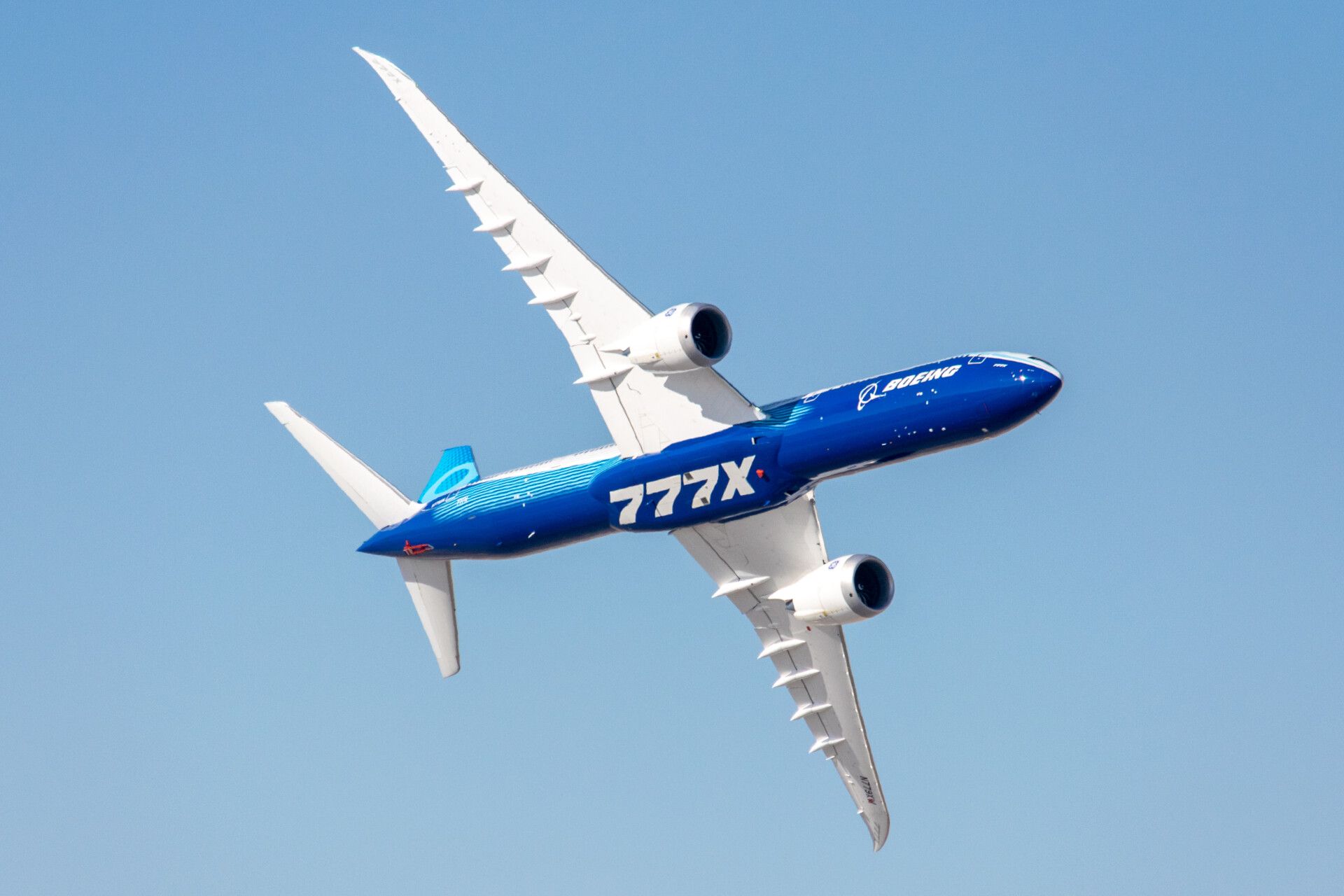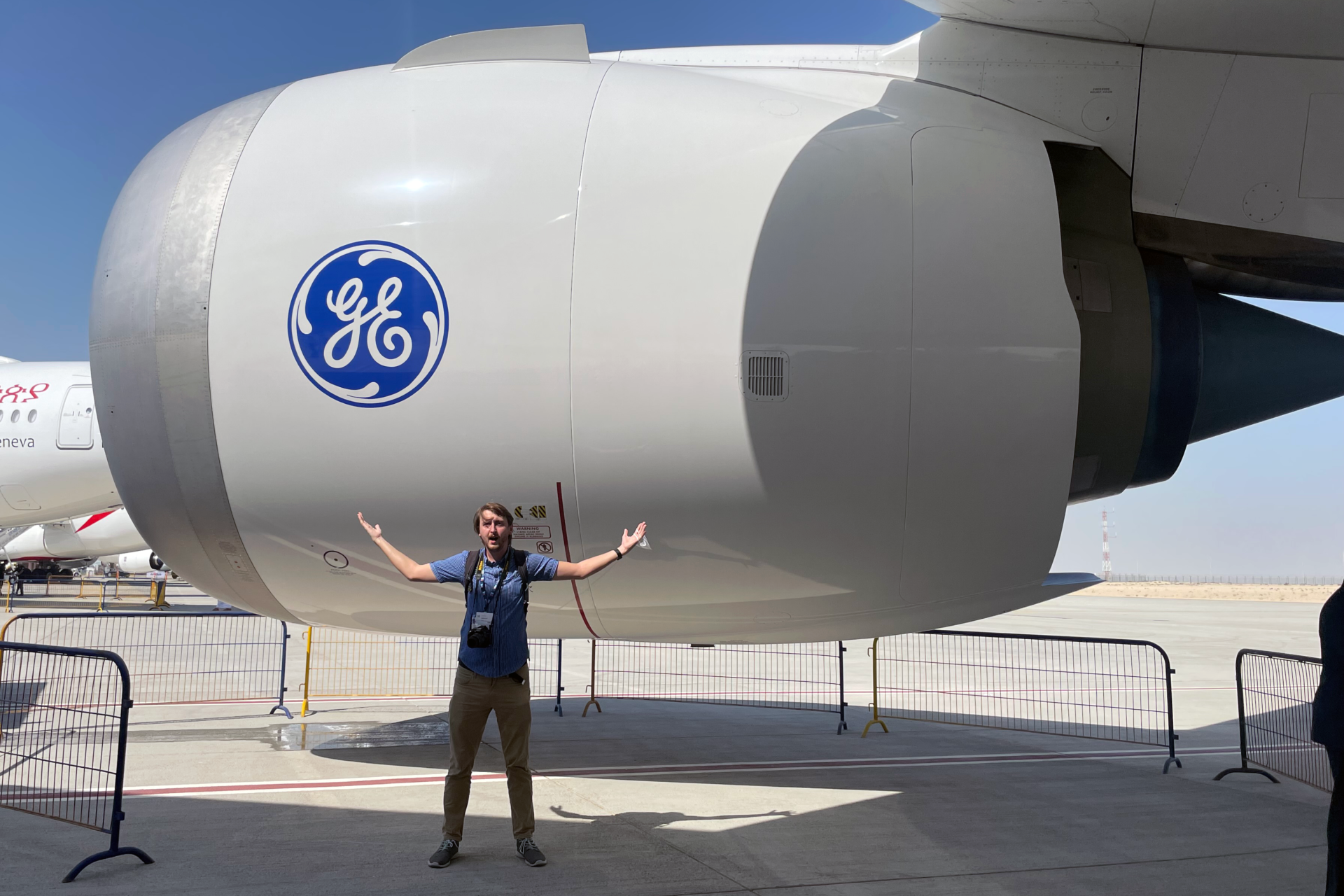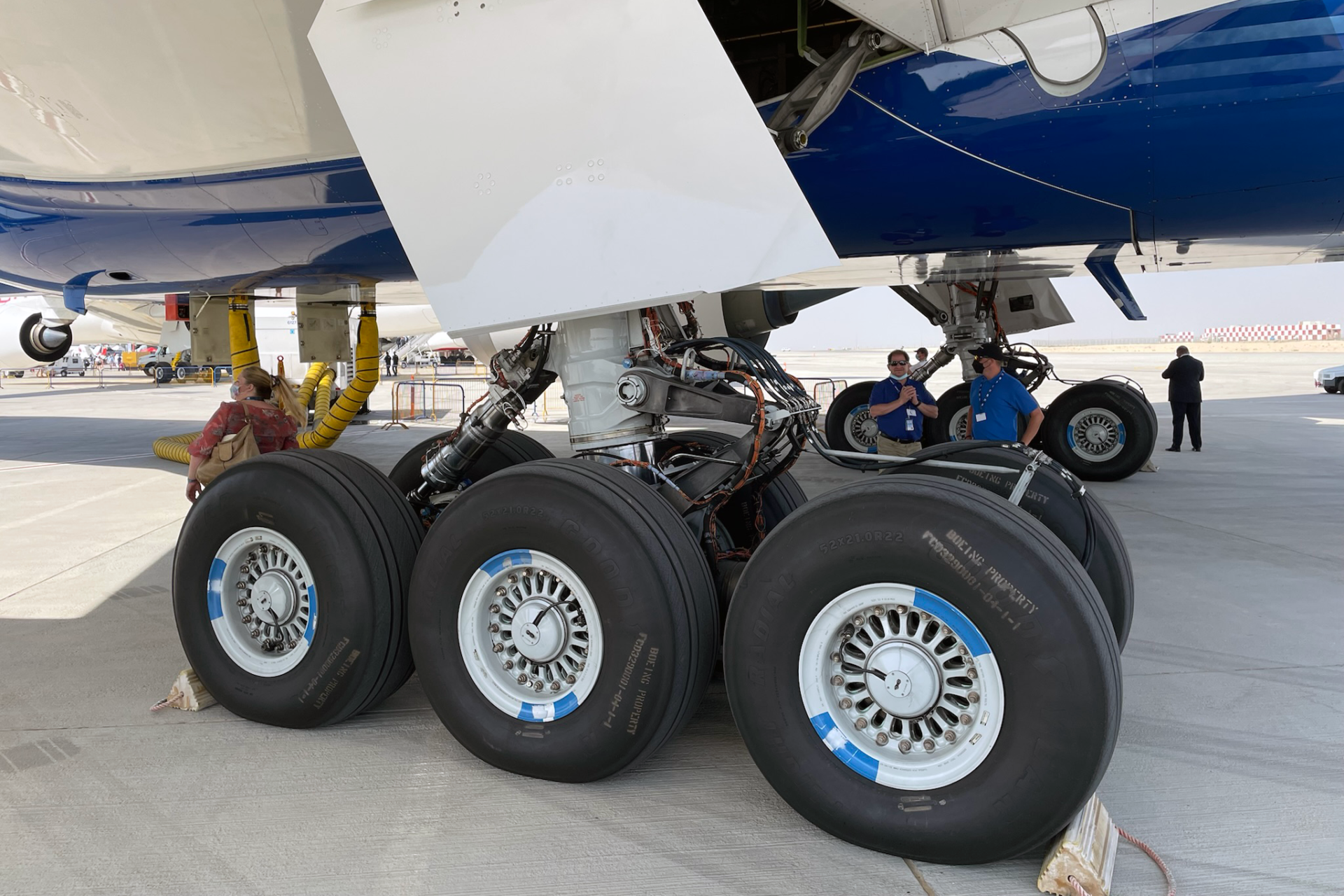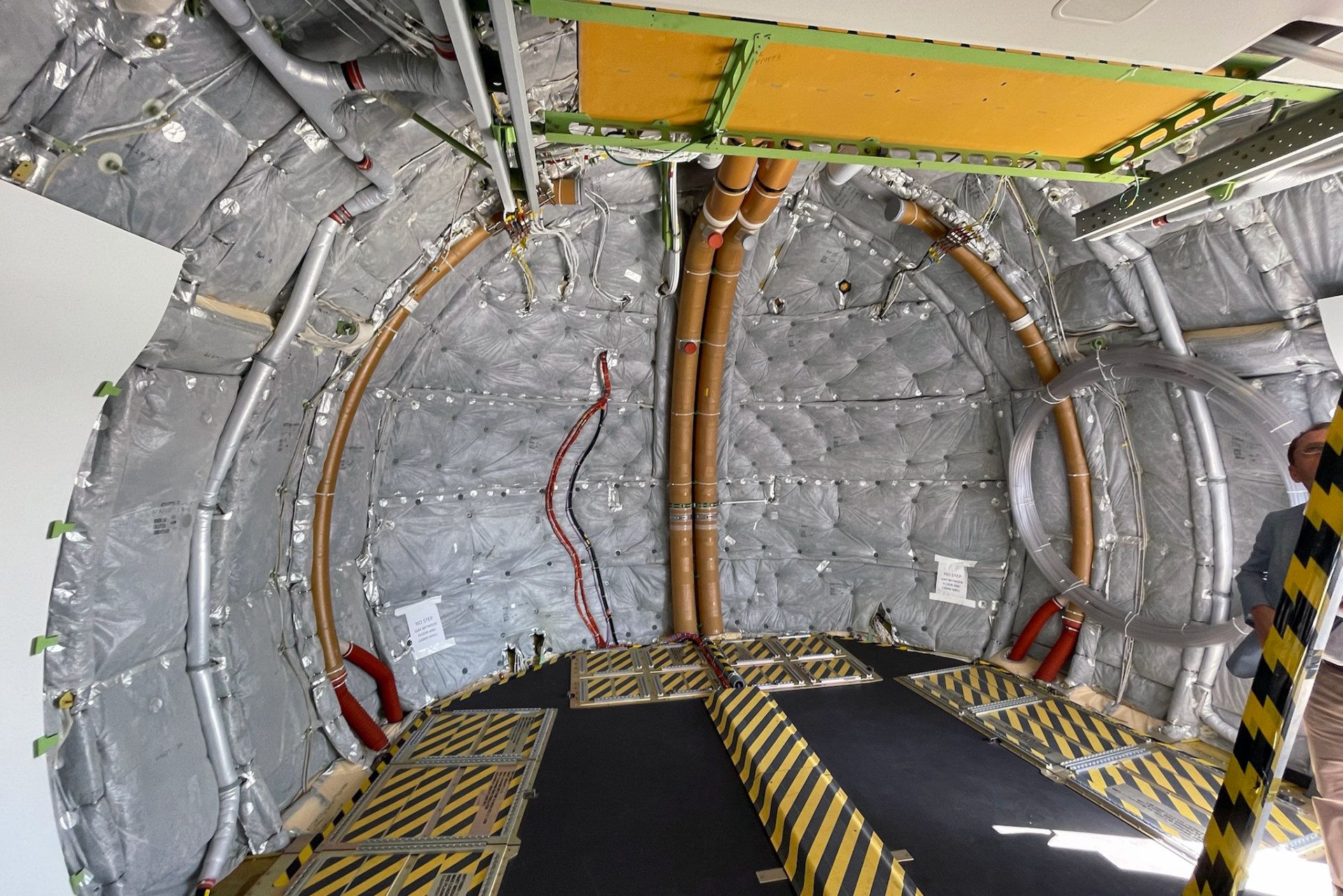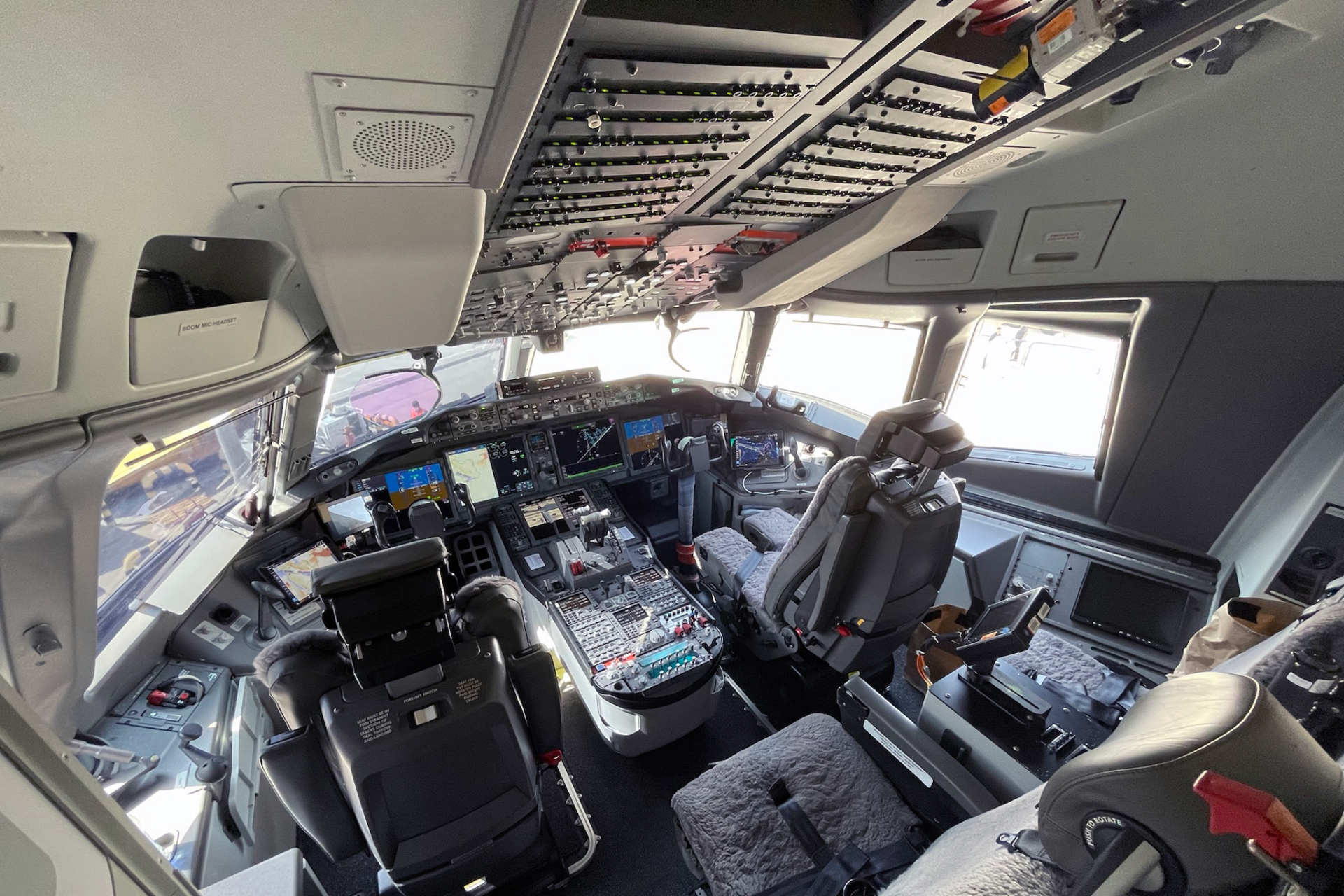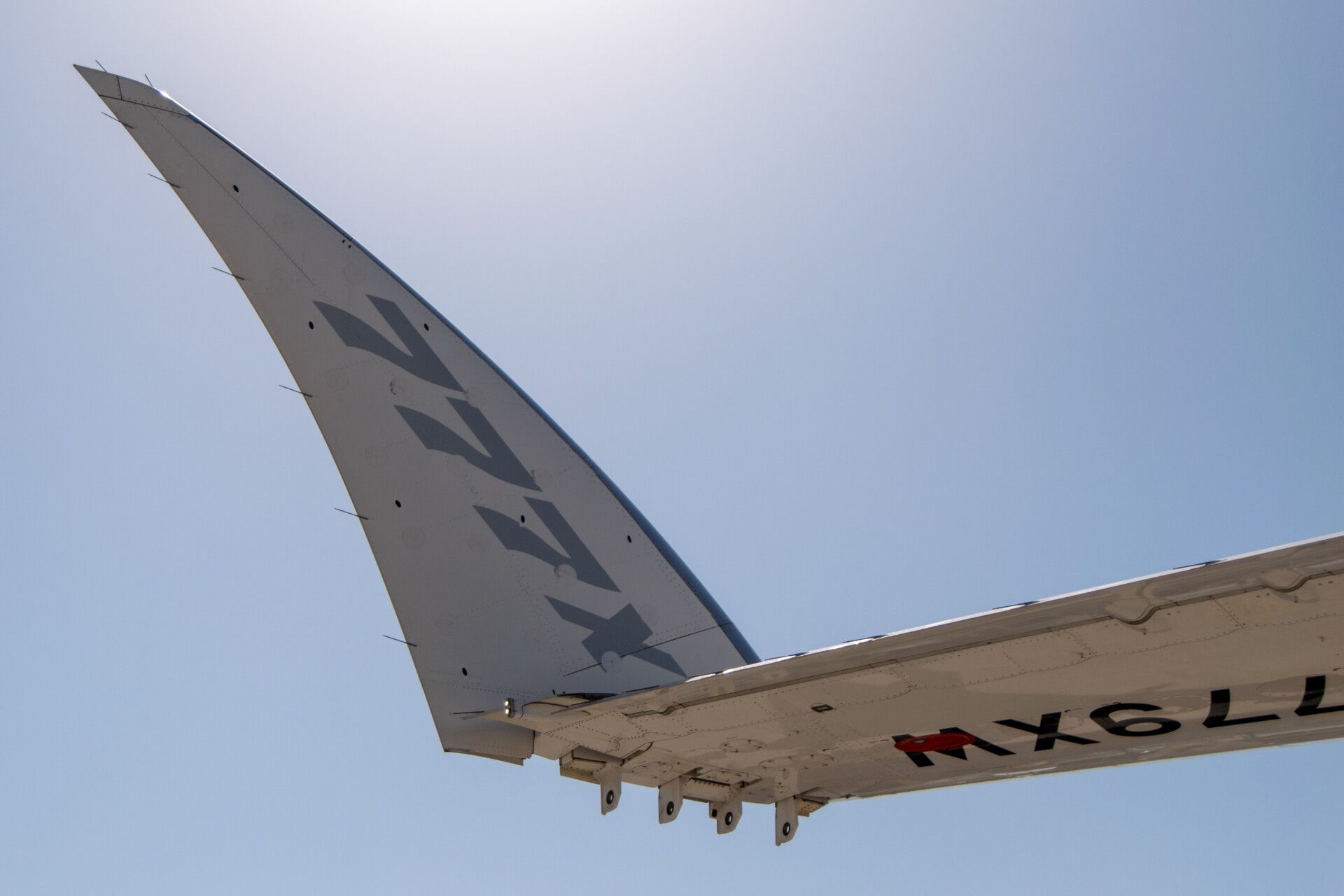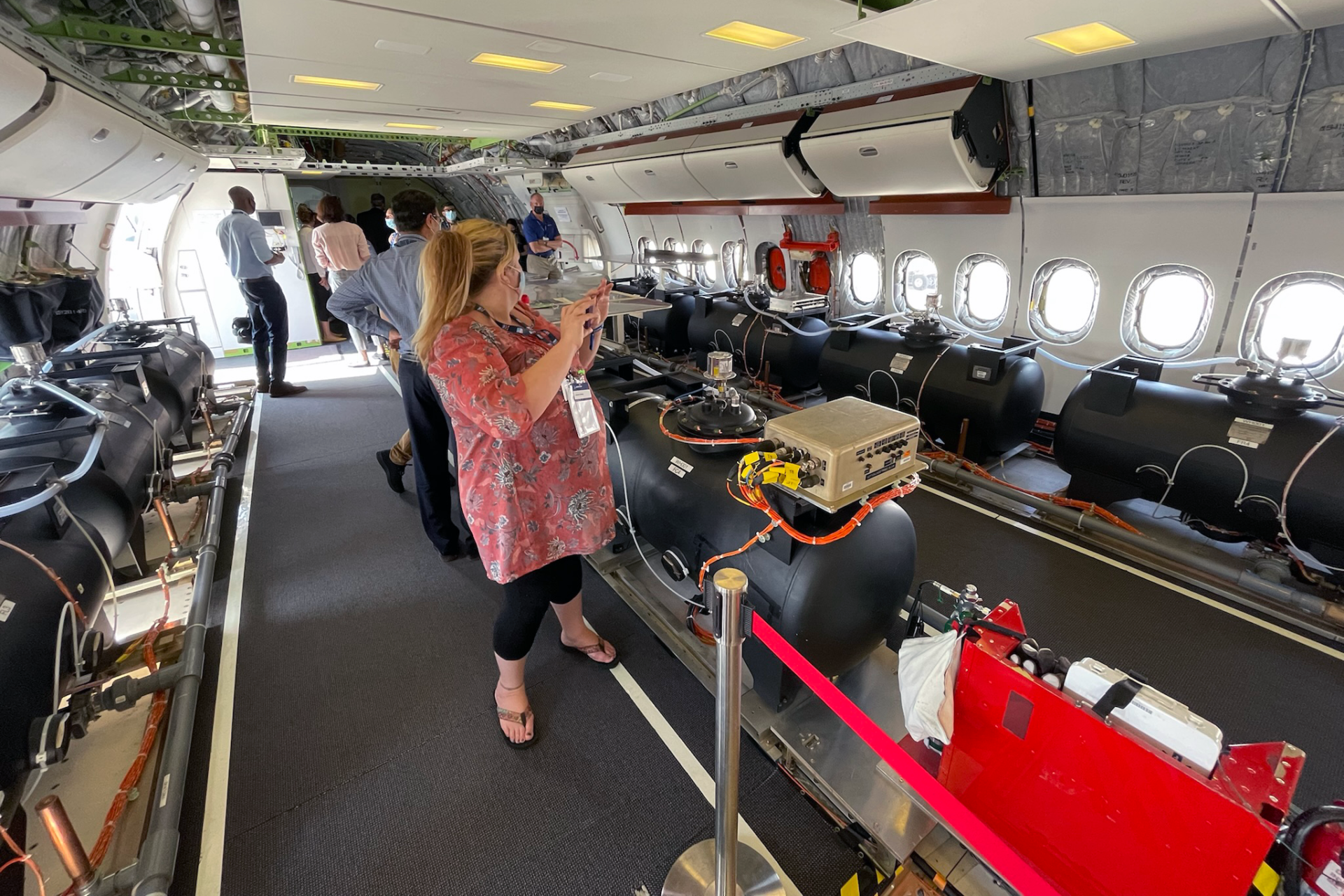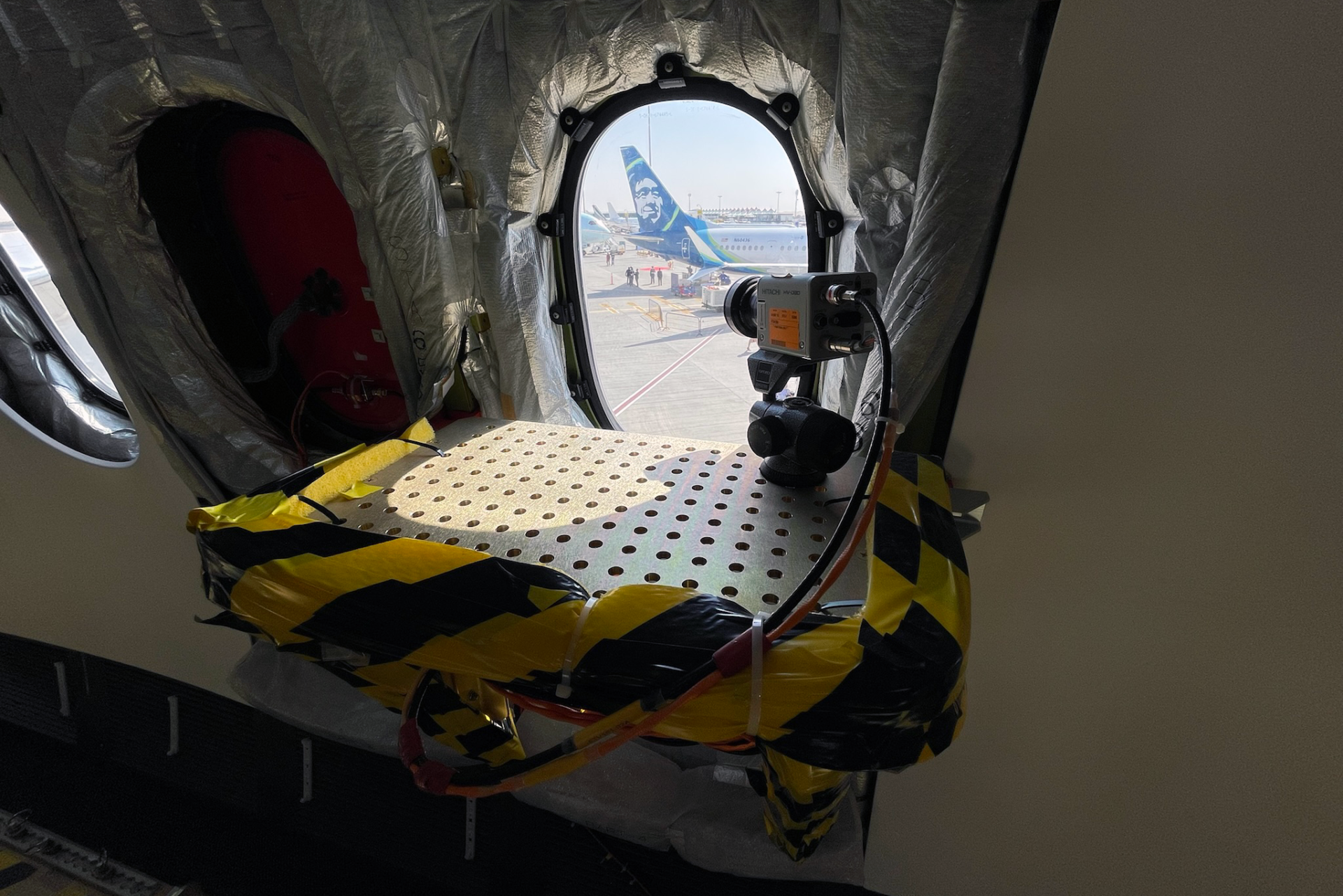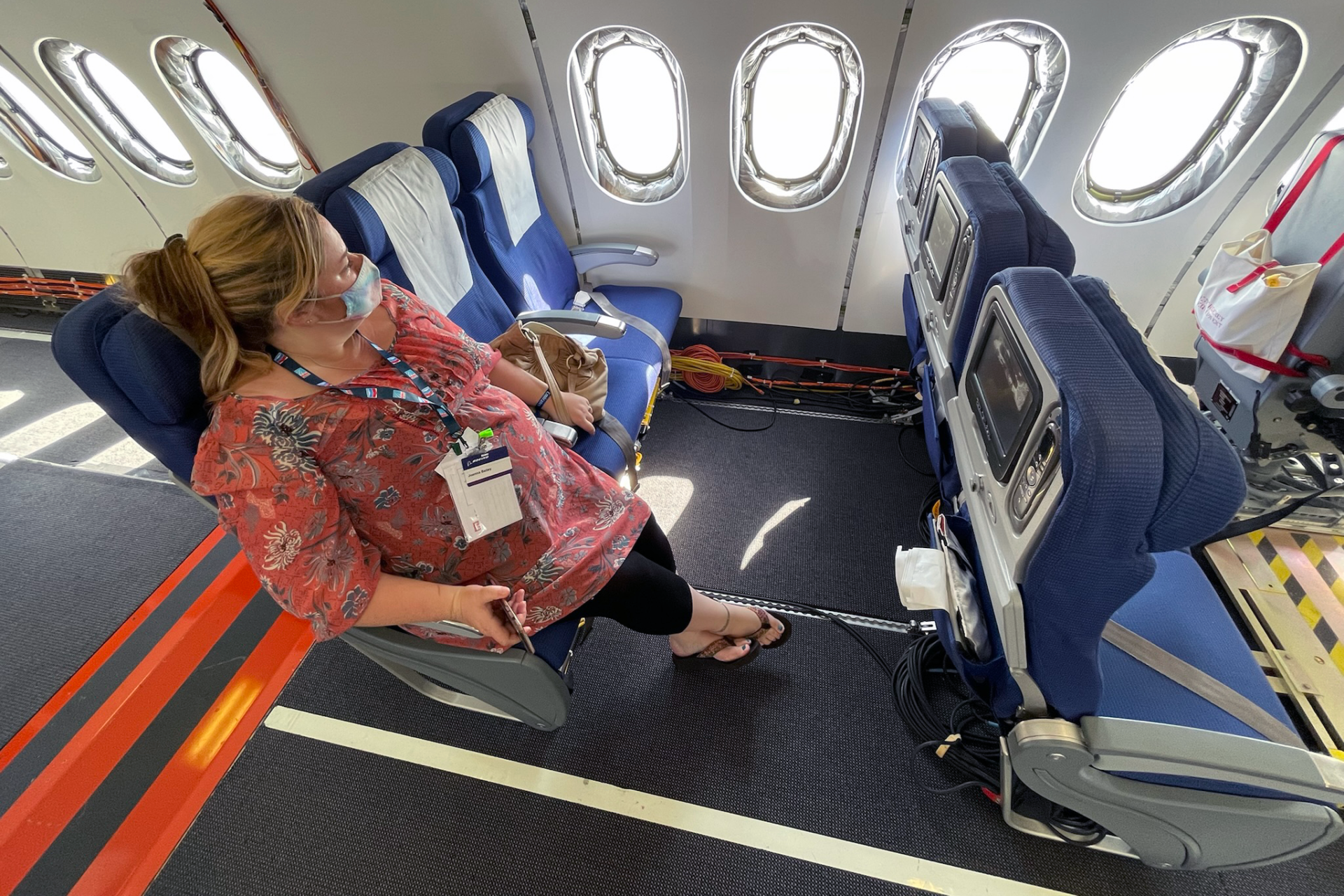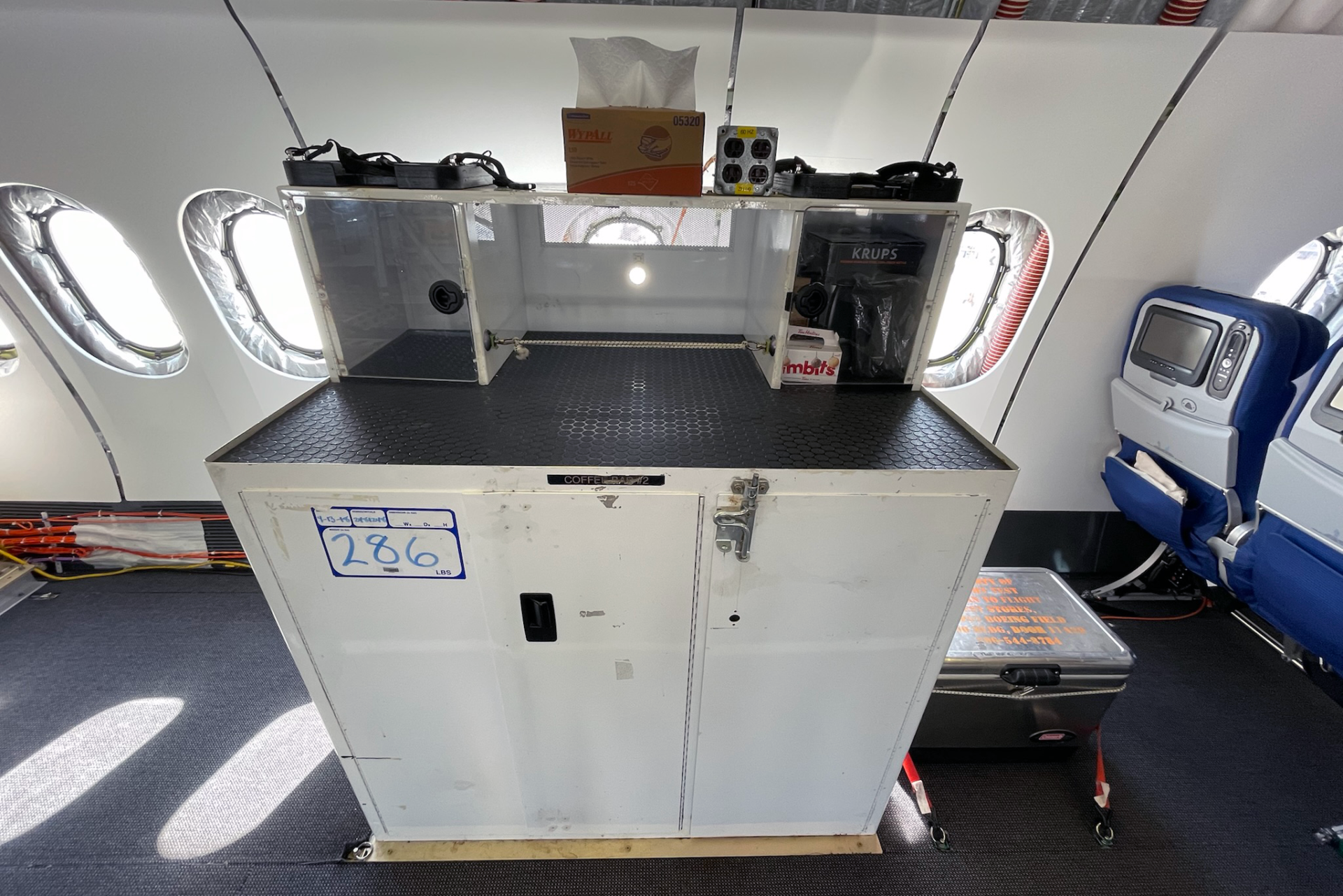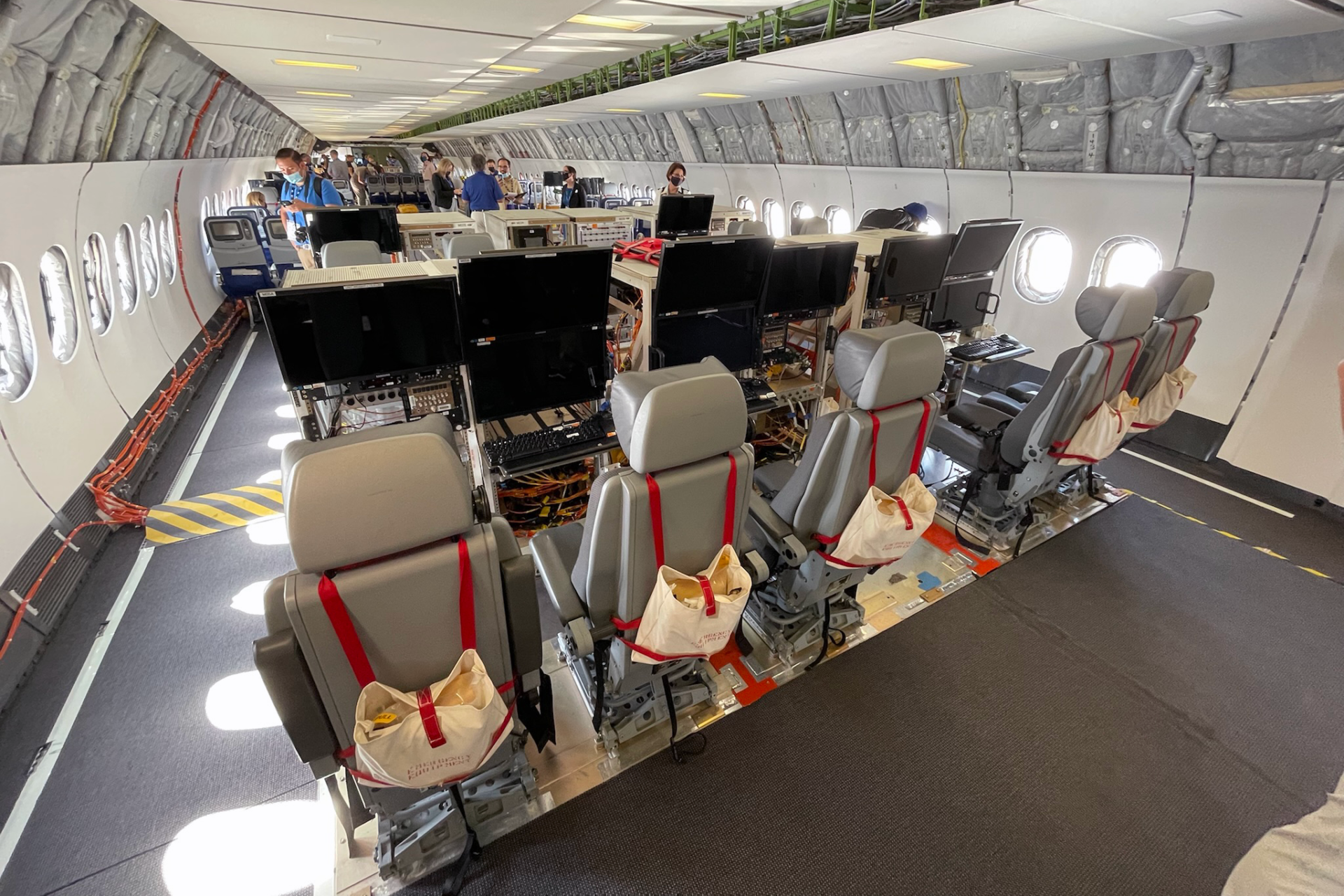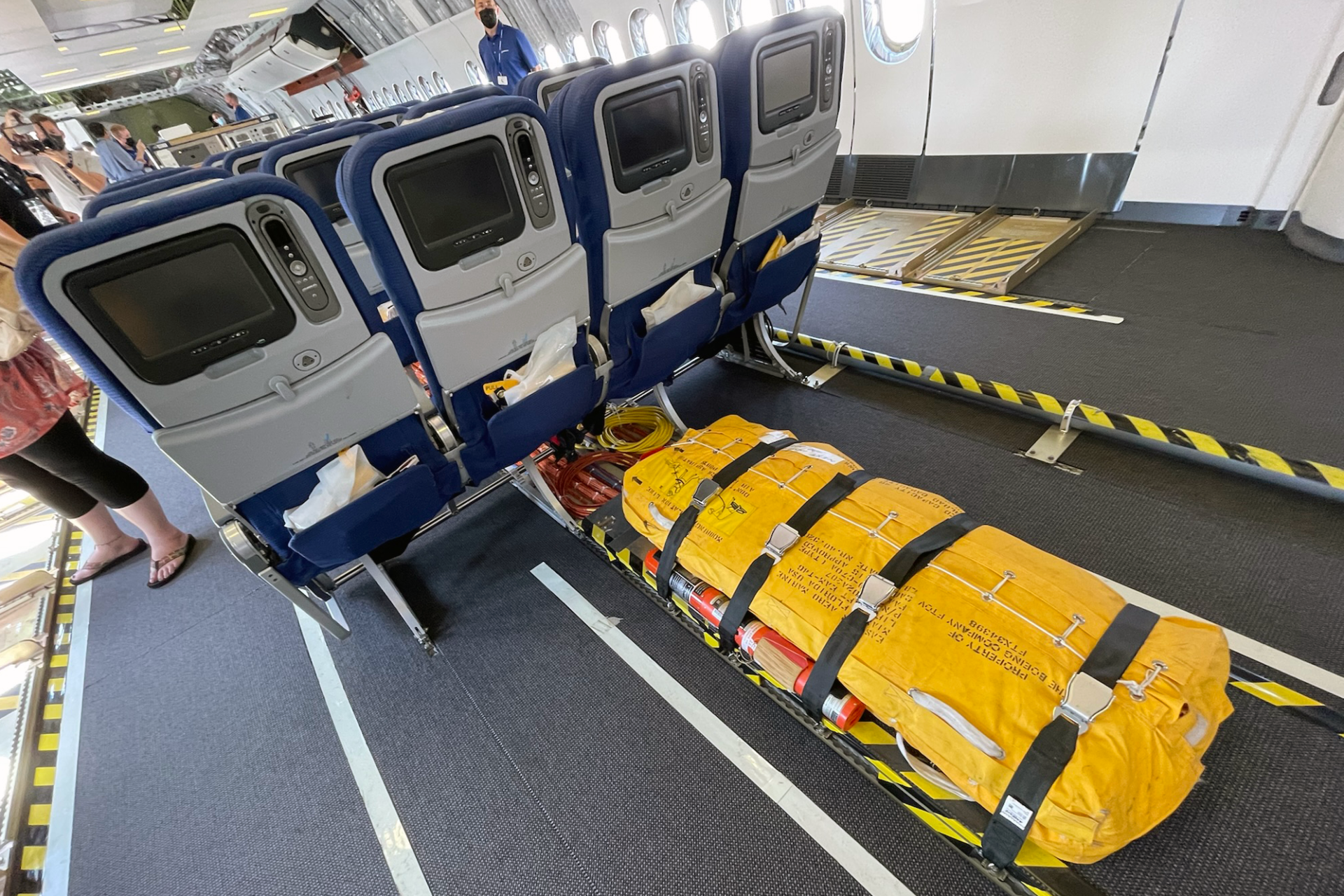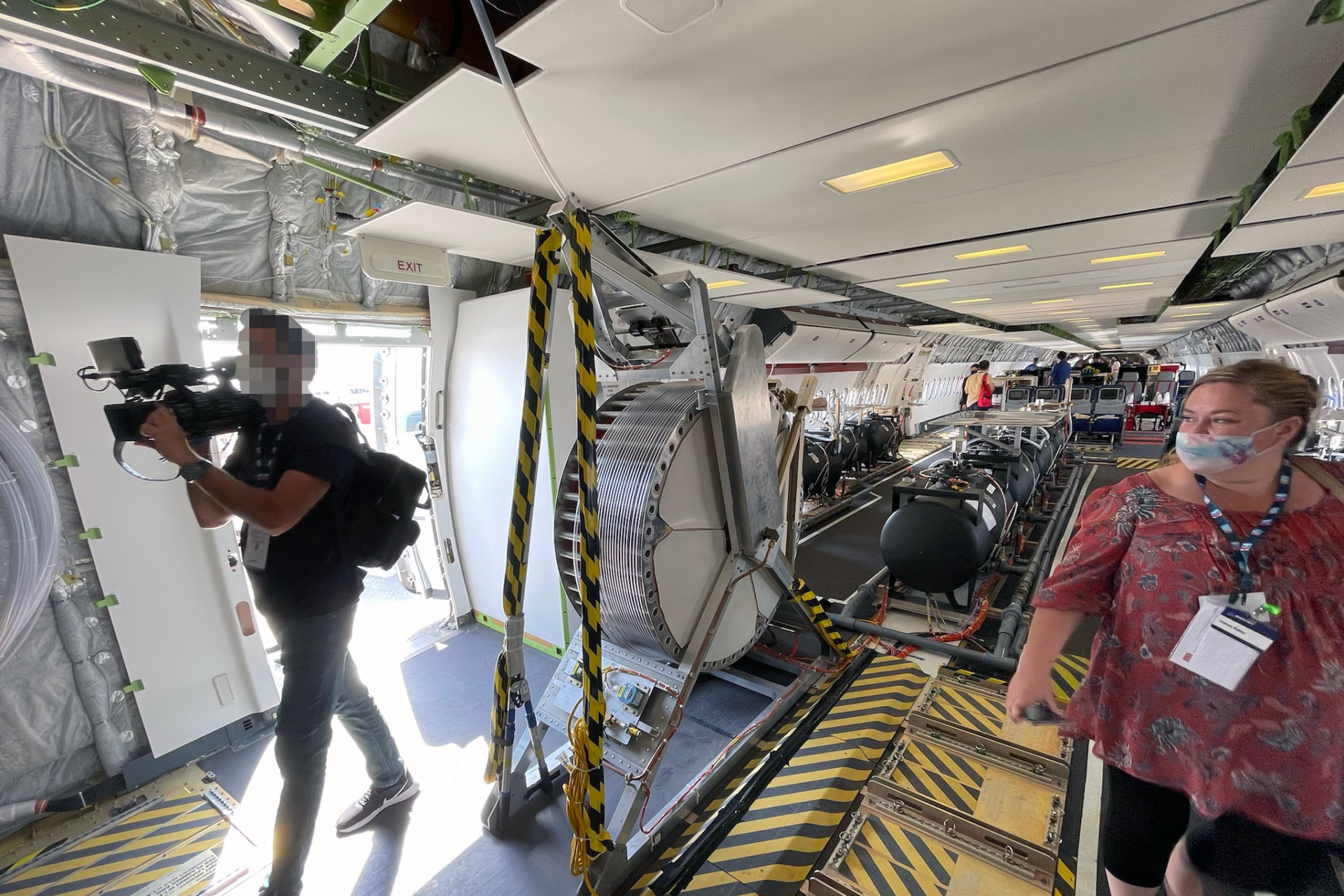It is coming up on two years since the first Boeing 777-9 test aircraft took to the skies for the first time in a cloudy Seattle. Fast forward to today, and the aircraft remains an enigma to many. At last month's Dubai Airshow, Simple Flying had the chance to get up close and personal with the plane. Here's what we found.
A true giant jet
Walking out onto the apron at Dubai's Al Maktoum International Airport, there was one aircraft, in particular, that was instantly grabbing everybody's attention. Boeing's latest widebody iteration, the 777X. The aircraft's massive GE9X engines are similar in diameter to the Boeing 737 fuselage. While photos don't do them justice, they're hard to miss.
The aircraft sits surprisingly high off of the ground. All could walk right under the plane without needing to duck out of the way. The aircraft has tricycle landing gear. The front landing gear has two wheels, while each main landing gear has six wheels. The final feature that stands out outside the aircraft is its two impressive folding wingtips.
Stay informed: Sign up for our daily and weekly aviation news digests.
Heading inside the jet
As Boeing is using the 777X for testing purposes, it isn't laid out like you would expect if stepping onto one of Emirates' Boeing 777s. As a testing aircraft, the carpeted floor is covered with rigs to accommodate a wide range of scientific equipment. As you board the plane, to the left was the star attraction on the aircraft, the cockpit.
Unfortunately, it wasn't possible to step inside the cockpit with a white rope stopping entry, but Simple Flying could peer inside from the door. The cockpit is fitted with three comfortable seats, glass cockpit displays, and heads-up displays. The cockpit of the completed commercial 777Xs will look reasonably similar, though some parts of the current cockpit exist purely for testing purposes.
One of the more exciting additions to the new 777X cockpit was the knob for controlling the position of the folding wingtips on the ground. Speaking to Simple Flying, one of the aircraft's test pilots, Brian Carlisle, remarked,
"There's one button that makes [retracting the wingtips] automatic so as the airplane decelerates, it's landing, it goes through 50 knots, the wings will fold up while its still on the runway... There's another switch to extend and then wings come down in 20 seconds..."
Carlisle explained that there are multiple safety mechanisms to stop pilots from taking off without extending the wingtips from checklist items to warnings and eventually a rejected takeoff. Next week Simple Flying will take a deeper dive into the story of the Boeing 777X's wingtips.
Moving down the cabin
The words "Experimental" on the aircraft's fuselage aren't the only clue that this isn't your typical aircraft. We're used to the sides of the aircraft being covered by white pannels, only exposing the windows. This isn't the case onboard N779XW, where the unfinished cabin leaves insulation exposed, though some side paneling is present.
Towards the front and rear of the cabin are three rows of large water tanks. These can be filled to simulate the weight of passengers onboard the aircraft. The aircraft will behave differently when empty and fully loaded, and it is essential for certification reasons that a wide range of scenarios are tested.
As you continue down the cabin, you approach the wings, where the engines are located. While the Boeing 777X's giant GE9X engines have been extensively tested before being placed on the aircraft, the extensive flight tests of the jet allow for even more data to be recorded. On each side of the fuselage, at a window ahead of the wing root, is a high-definition camera positioned with a prime view of each engine.
Stay informed: Sign up for our daily and weekly aviation news digests.
Refreshments and a restroom
Test engineers will want to stretch their feet and move around the cabin on some of the longer test flights operated by the 777X, such as the 15-hour trek to get to Dubai from Seattle. As such, the aircraft is equipped with the basic comforts you would expect on any jet. Including standard airline seating with outstanding legroom.
A coffee bar weighing 286lbs is located behind the water tanks on the left-hand side of the aircraft. Aircraft coffee machines are usually specially made to meet specific certification requirements, leading to them costing thousands of dollars. Of course, as an experimental jet, the Boeing 777X doesn't need to have such a high-tech solution. The coffee bar is fitted with an everyday Krups coffee maker.
Engineers stations at the back of the jet
As you walk towards the back of the jet, you reach the business end of the plane as far as analyzing the data gathered is concerned. Almost like a Nasa control center, seats are arranged in front of an array of screens, with engineers each having different parameters to monitor during flight.
Each workstation seat has a life vest attached to the back if the worst should happen. The aircraft also has a sizable life raft strapped to the aircraft's floor with seatbelts. If the plane were to ditch on a large body of water, this would then come into play.
Right at the rear of the aircraft, there was one more surprise to be had. A vast circular drum stands in the middle of the cabin, just ahead of the rear pressure bulkhead. A tube extends out of the drum towards a hole in the ceiling. According to Boeing, this is the system that measures static pressure. You may recognize the shuttlecock that floats behind test aircraft. This is what it is attached to.
Unfortunately, our time onboard the Boeing 777X was over far too soon, and it was time to leave the aircraft via the rear exit. This provides one more surprise as you're faced with the aircraft's colossal tail while standing on the stairs.
What do you make of Boeing's test 777X? Let us know what you think and why in the comments!

